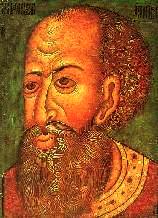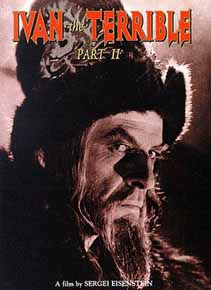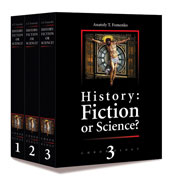History Online - Russian Tsars
[an error occurred while processing this directive]Ivan the Terrible
Ivan the Tyrant?
Stalin admired him. The rest of Europe believed he was mad. What is certain is that he was one of the most ruthless tyrants in history.
 The name 'Ivan the Terrible' conjours up images of senseless cruelty and paranoia. Yet, for many in Russia, he is a national hero. Ivan appears to be a man of huge contradictions - a man of God who personally tortured his victims and beat his own son to death; a hardened despot who often behaved like a coward, asking his ally, Elizabeth I of England, for political asylum; a man who believed himself chosen to save the souls of his people, but who brutally put thousands to death in carefully orchestrated purges.
The name 'Ivan the Terrible' conjours up images of senseless cruelty and paranoia. Yet, for many in Russia, he is a national hero. Ivan appears to be a man of huge contradictions - a man of God who personally tortured his victims and beat his own son to death; a hardened despot who often behaved like a coward, asking his ally, Elizabeth I of England, for political asylum; a man who believed himself chosen to save the souls of his people, but who brutally put thousands to death in carefully orchestrated purges.
Born in 1530, Ivan was only three when he inherited the Russian throne following his father's death. At the age of seven, tragedy struck again when his mother was poisoned by nobles at court. By his early teens, he was already displaying some of his uglier traits. He would throw live animals from towers and appeared to derive pleasure from doing so.
 Ivan was crowned Russia's first Tsar at the age of 17. Three weeks later he married, having chosen his bride in a national virgin competition. Virgins over the age of twelve were brought to the Kremlin to be paraded before him. He chose Anastasia, the daughter of a minor noble, and their marriage proved to be a very close one.
Ivan was crowned Russia's first Tsar at the age of 17. Three weeks later he married, having chosen his bride in a national virgin competition. Virgins over the age of twelve were brought to the Kremlin to be paraded before him. He chose Anastasia, the daughter of a minor noble, and their marriage proved to be a very close one.
Ivan had huge ambitions for his new Imperial dynasty. He launched a holy war against Russia's traditional enemy - the Tartars - showing no mercy to these Muslim peoples and decimating their cultural heritage. Ivan's conquest of Kazan and later Astrakhan and Siberia gave birth to a sixteenth century personality cult glorifying him as the Orthodox crusader.
His wife Anastasia helped to hold his cruelty in check, but in 1560 she died. He accused his nobles of poisoning her, and became even more mentally unstable. Until recently, most scholars have dismissed Ivan's accusation of murder as evidence of his paranoia. But recent forensic tests on Anastasia's remains have revealed more than ten times the normal levels of mercury in her hair. It is likely, that Anastasia was indeed murdered, sending Ivan into a downward spiral of murder and cruelty.
He set up a bodyguard that has been described as Russia's first 'secret police' - the Oprichniki - as a religious brotherhood sworn to protecting God's Tsar. In reality, they became marauding thugs, ready to commit any crime in the Tsar's name. Ivan sentenced thousands to internal exile in far flung parts of the empire. Others were condemned to death; their families and servants often killed as well. Ivan would give detailed orders about the executions, using biblically inspired tortures to reconstruct the sufferings of hell. More than 3,000 people lost their lives in Ivan's attack on Novgorod alone. In a fit of rage, Ivan struck his son and heir dead with his staff. Mad with sorrow and guilt, he had a dramatic volte face, posthumously forgiving all those he'd executed and paying for prayers to be said for their souls. Before his death, Ivan was re-christened as the monk Jonah and buried in his monk's habit - in the hope of finding ultimate forgiveness.
"Ivan started as an angel. Ivan the Terrible was the fallen angel. He started as a very wise Tsar and ended as a devil. And Eisenstein wanted to follow this evolution from angel to the devil. The first image he discovered for this subject was Ivan in the Cathedral. And the background this is the Last Judgement and Ivan's staying on his knees asking God to forgive him. And God keeps silence when Ivan asked him 'have I right to kill people for the great Russia?' and because silence is the answer, Ivan is trying to kill the God," explains film historian Naum Kleinman.
The sixteenth century was a century of unbridled force and exuberant intellectual activity. The Kremlin, recently erected beside the Moskva by Italian architects, stood on the fringe of an intellectual world that was to contain at one and the same time, Leonardo, Charles V, Luther, and Loyola, unique personalities side by side with seething peasant revolts, mass movements toward evangelical religion, and the first beginning of the national power states. It was the beginning of the pan-European sphere, with its claim to intellectual hegemony over a quarters of the world.
The whole Muscovite outlook on life was quite remote from this new Western Europe, despite certain superficial similarities between Ivan IV and Francis I of France. Ivan faced the same problems with his nobility that Western rulers confronted. But there was no ideological system in Russia and the social life seemed lifeless and immoveable. The feudal lords, the smaller territorial princes, and their heirs had to be overthrown. For the sake of national unity it had to be done by whatever means might be necessary - in England, France or Russia.
Protestantism had some effect on rebellious monks like Nil Sorsky and the anti-authoritarian spirit of revolt among the peasants. But orthodox theocracy destroyed any lasting influence of the Reformation in Russia. Ivan was at war with boyars and bishops at home and with the Polish ''Latins'' in Lithuania. The age of the Reformation and the peasant wars in Western Europe had given way to the formation of national states, the Counter-Reformation and the baroque.
The eastern autocrat, with his craving for knowledge, played his part in this development and moved with the times to some degree. From a boy eager for knowledge, and a youthful reformer, he developed into a Renaissance tyrant. More than that he became a man who, though he could not control his own nature, nonetheless succeeded in developing his intellect himself and if he had only been able to make a fresh start might have become a pupil of Western Europe. He was more than despotic and innovative--he was an independent, self-reliant personality, something new in Moscovy. Thus Ivan was the incarnation of the Russian idea as it developed historically, transforming the limp and formless body of Muscovite nationality into a concrete political structure. But, like so many other tsars, he could not really move his people with him. So Russia of the sixteenth century made little contribution to sixteenth century Europe.
Ivan IV is a sinister and arresting figure in the history of the Russian Middle Ages. The surname of "Groznyi" (Dread or Terrible) by which he is known is fully deserved. Boundless suspicion, insatiable cruelty, and extreme depravity were perhaps his outstanding characteristics and became apparent while he was still an adolescent. Intellectually Ivan was markedly above the level of his contemporaries, and he ranks indeed as one of the most literate of the Russian rulers. A devout churchman, Ivan scrupulously observed the complex ritual of orthodox services and was active in Church affairs.

